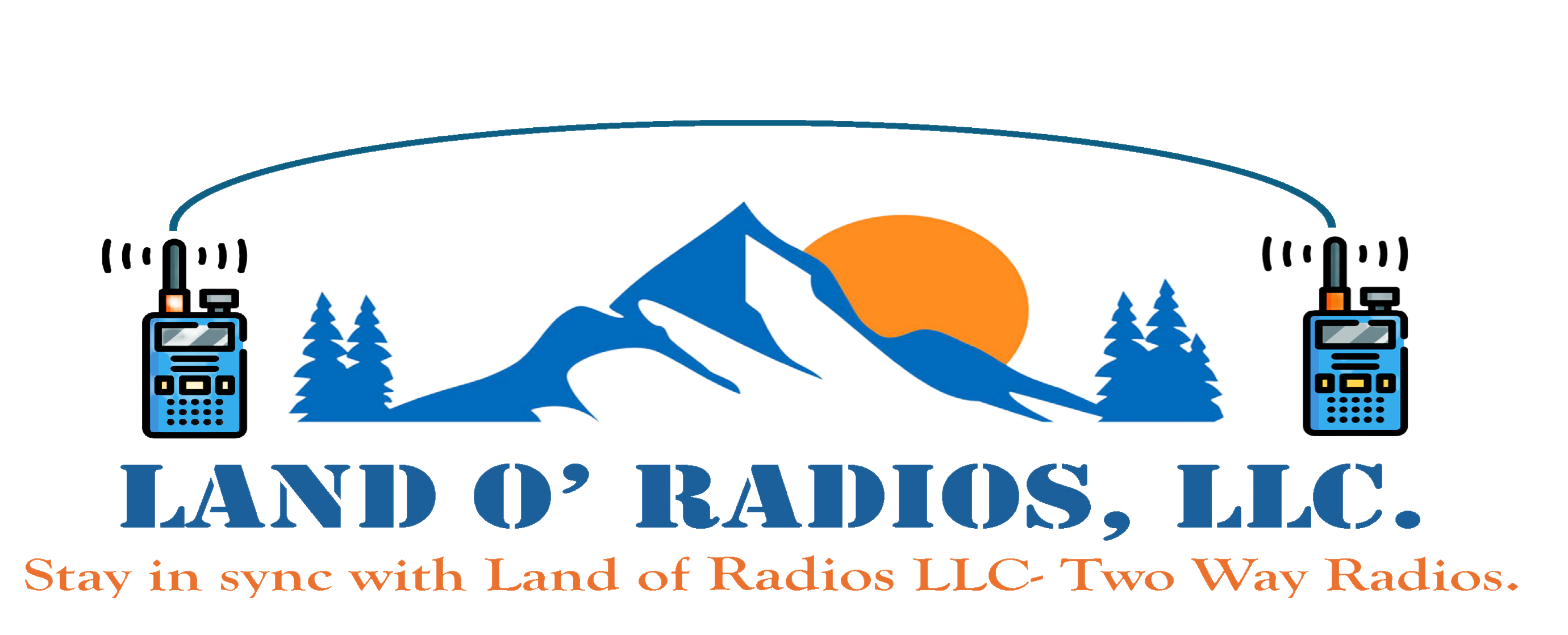Why Retail Radios Are Essential for Store Success
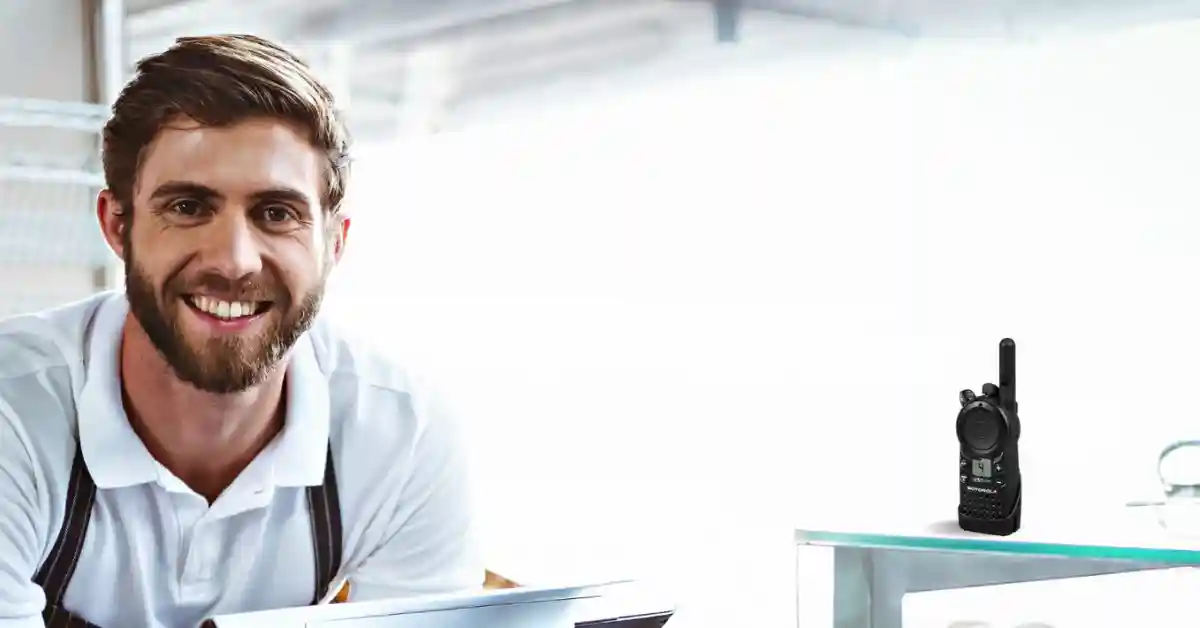
Retail radios are two-way communication devices that enable instant voice contact between store staff, improving customer service, operational efficiency, and loss prevention. Here's what you need to know:
Top Benefits:
- Instant Communication - Push-to-talk enables near-instant voice communication across the store
- Better Customer Service - Staff can quickly coordinate price checks, inventory requests, and assistance
- Loss Prevention - Discrete alerts help deter theft and coordinate security responses
- Improved Efficiency - Reduces time spent locating staff and speeds up transactions
Power Requirements by Store Size:
- Small shops (under 10,000 sq ft): 0.5-2 watt radios
- Medium stores (10,000-50,000 sq ft): 2-3 watt radios
- Large stores (50,000+ sq ft): 3-5 watt radios with repeaters
Popular Radio Types:
- License-free FRS/GMRS radios for simple operations
- Digital DMR radios with 30-128 channels for larger stores
- 900 MHz frequency-hopping radios for interference-free communication
As the research shows, two-way radios are as common as cash registers in retail stores, with big box retailers like Walmart using over 24 radios per location. Using radios can shave seconds and even minutes off transactions, creating customer loyalty through faster service.
Whether you're running a small boutique or managing a large department store, the right radio system keeps your team connected and your customers happy. From coordinating curbside pickup to managing inventory alerts, these communication tools have become essential for modern retail operations.
I'm Rene Fornaris, Vice President of Land O' Radios, with over ten years of experience in Two-Way Radio Communications helping retailers find the perfect retail radios for their stores. In this guide, I'll walk you through the best radio options for every retail environment, from compact license-free models to enterprise-grade digital systems.
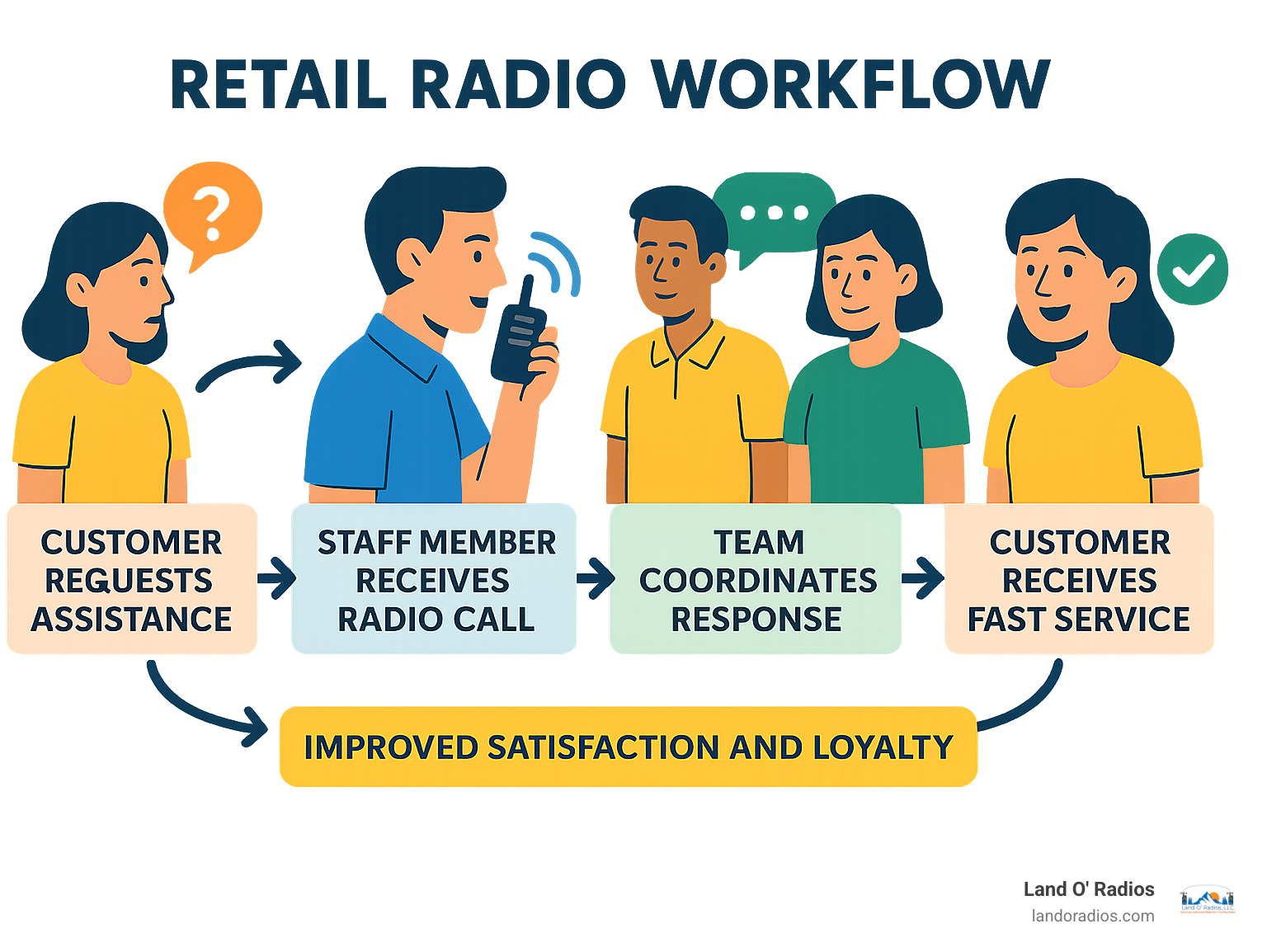
The Big Picture
From small boutiques to massive warehouse stores, retail radios serve different but equally important roles. In a boutique, they help coordinate between the sales floor and stockroom when a customer needs a different size. In supermarkets, they enable instant communication for price checks and spill cleanups. In warehouse-style stores, they help staff steer vast aisles and coordinate inventory management across multiple departments.
The key is understanding that one size doesn't fit all - your radio needs depend on your store's unique layout, size, and operational requirements.
Retail Radios 101: Why They're Essential for Modern Stores
The retail landscape has changed dramatically over the past decade. Customer expectations are higher, margins are tighter, and competition is fierce. In this environment, retail radios aren't just nice-to-have accessories - they're essential tools for survival.
Push-to-talk technology delivers instant communication that's faster than texting, more reliable than cell phones, and more professional than shouting across the store. When a customer needs assistance, your staff can coordinate a response in seconds, not minutes.
The productivity boost is real and measurable. Research shows that retailers often assign a walkie talkie to each associate to maximize coverage and efficiency on the sales floor. This investment pays for itself through improved customer satisfaction, reduced shrinkage, and faster transaction times.
Safety is another crucial factor. Retail radios enable immediate response to emergencies, from medical incidents to security threats. Staff can discreetly alert management about suspicious activity or coordinate responses to accidents without creating panic among customers.
How Retail Radios Improve Customer Service
Customer service is where retail radios truly shine. When a customer asks about product availability, your floor staff can instantly check with the stockroom instead of leaving the customer waiting. Price checks that used to take five minutes now take thirty seconds.
Curbside pickup has become a major service differentiator, and radios are essential for coordinating these operations. As curbside pickup increases, two-way radios help coordinate order changes and reduce customer wait times. Staff can communicate real-time updates about order status, parking locations, and any last-minute changes.
The loyalty gains are significant. Using two-way radios in retail can shave seconds and even minutes off transactions, which creates customer loyalty. When customers experience fast, efficient service, they're more likely to return and recommend your store to others.
Queue management becomes much smoother with radio coordination. When checkout lines start building up, floor staff can be quickly redirected to open additional registers or help with bagging. This prevents the frustration that drives customers away.
Retail Radios & Loss Prevention
Loss prevention is where retail radios prove their worth in hard dollars. Associates wearing radios contribute to reduced shrinkage by deterring potential theft - the visible presence of communication equipment signals that staff are connected and watching.
Discrete alerts are crucial for effective loss prevention. Staff can use coded language or silent alarm features to alert security without tipping off potential shoplifters. This coordination between floor staff and loss prevention teams is essential for catching theft in progress.
The deterrence effect shouldn't be underestimated. When potential thieves see that staff are equipped with radios and can instantly communicate with each other, they're more likely to move on to an easier target. Scientific research on retail shrinkage shows that visible communication systems are effective deterrents.
How to Choose & Accessorize Retail Radios
Choosing the right retail radios involves balancing several factors: coverage area, power requirements, feature needs, and budget constraints. The good news is that stores are generally indoors, so 0.5/2 watt radios are enough to cover most retail spaces, making low-power, license-free radios ideal for many retail environments.
Coverage area is your starting point. Measure your store's square footage and consider obstacles like metal shelving, concrete walls, and multiple floors. These factors affect radio range and may require higher power or repeater systems.
The choice between analog and digital radios depends on your needs. Analog radios are simpler and less expensive, making them perfect for basic communication needs. Digital radios offer superior audio clarity, longer battery life, and advanced features like text messaging and GPS tracking.
License-free radios operate on FRS (Family Radio Service) or GMRS (General Mobile Radio Service) frequencies without requiring FCC licensing. Licensed radios operate on business frequencies that require FCC licensing but offer more channels and less interference.
Channel capacity matters for larger operations. Digital radios can store 30-128 channel data, with over 260 privacy codes to eliminate channel conflicts, making them suitable for large supermarkets and department stores.
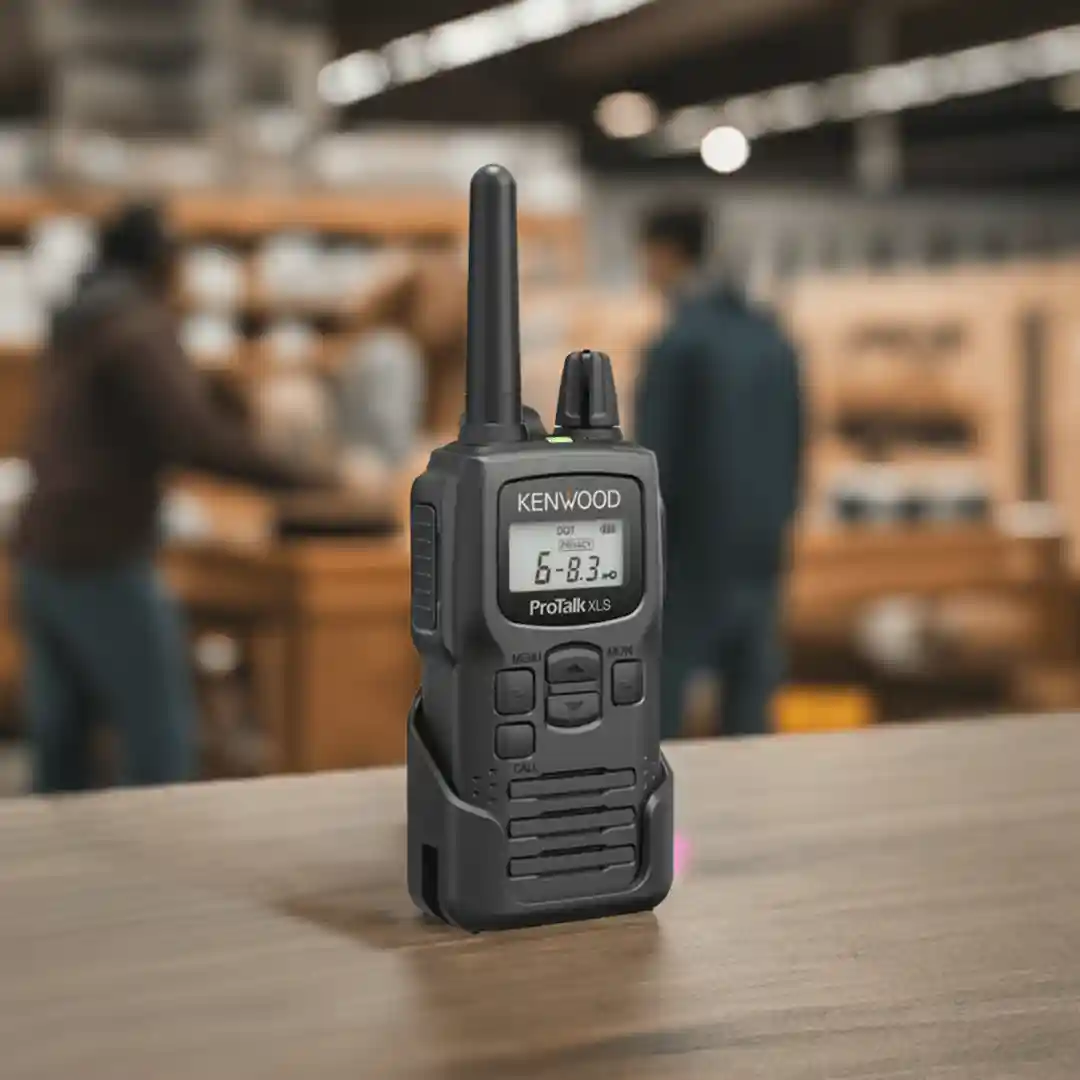
Matching Radio Power to Store Size
Power requirements scale with store size and layout. Small shops under 10,000 square feet typically need only 0.5-2 watt radios. These provide adequate coverage for most boutiques, small grocery stores, and specialty shops without overwhelming the space with unnecessary power.
Medium stores between 10,000-50,000 square feet benefit from 2-3 watt radios. This includes most chain stores, mid-size supermarkets, and department stores. The additional power helps penetrate obstacles and ensures reliable communication across the entire sales floor.
Large stores over 50,000 square feet often require 3-5 watt radios and may need repeater systems. Big box retailers, warehouse stores, and large supermarkets fall into this category. The combination of size and obstacles like tall shelving requires maximum power and sometimes additional infrastructure.
Floor count significantly impacts radio performance. Multi-story stores need radios powerful enough to penetrate between floors, or they may need repeater systems to ensure coverage throughout the building. Concrete and steel construction can severely limit radio range between floors.
Feature Checklist for Retail Radios
Voice clarity is non-negotiable in retail environments. Background noise from customers, music, and equipment can interfere with communication. Look for radios with noise-canceling features and clear audio reproduction.
Encryption and privacy codes help prevent eavesdropping and reduce interference from other nearby radio users. This is especially important in shopping centers where multiple businesses might be using similar frequencies.
Group calling capabilities allow managers to communicate with specific teams (like all floor staff or just the stockroom crew) without bothering other departments. This reduces radio chatter and improves efficiency.
Battery life directly impacts operational efficiency. Look for radios that provide at least 8-10 hours of typical use. Some models offer up to 15 hours of operation, which is ideal for stores with long operating hours.
Lightweight construction matters when staff wear radios for entire shifts. Heavy radios become uncomfortable and may discourage use. Modern radios balance durability with comfort.
For more detailed guidance on getting your team up to speed with new radio equipment, check out our training best practices guide.
Accessory Must-Haves
Earpieces and headsets are essential for maintaining a professional atmosphere. Headsets and earpieces are recommended in retail environments to reduce noise from radio chatter and maintain a professional atmosphere. They allow staff to communicate discreetly without disturbing customers.
Belt clips and holsters keep radios secure and accessible. Look for rotating clips that allow staff to position radios comfortably while working. Magnetic mounts can be useful for staff who frequently move between different work areas.
Multi-unit chargers are crucial for larger operations. Six-bank chargers allow you to charge multiple radios simultaneously, ensuring your entire team starts each shift with fully charged equipment. This eliminates the frustration of dead batteries during busy periods.
Antimicrobial covers have become increasingly important for hygiene. These protective covers can be easily cleaned and sanitized between shifts, which is especially important when radios are shared between staff members.
Covert microphones and earpieces are valuable for loss prevention teams. These allow security staff to communicate without drawing attention to themselves or alerting potential shoplifters.
Roundup: Best Retail Radio Categories & Standout Models
The retail radios market offers several distinct categories, each designed for different operational needs and budgets. Understanding these categories helps you choose the right solution for your specific situation.
Compact license-free radios are perfect for small operations that need simple, reliable communication. Digital DMR radios offer advanced features for larger stores with complex operational needs. 900 MHz license-free radios provide interference-free communication without licensing requirements. Smart Wi-Fi wearables represent the cutting edge of retail communication technology.
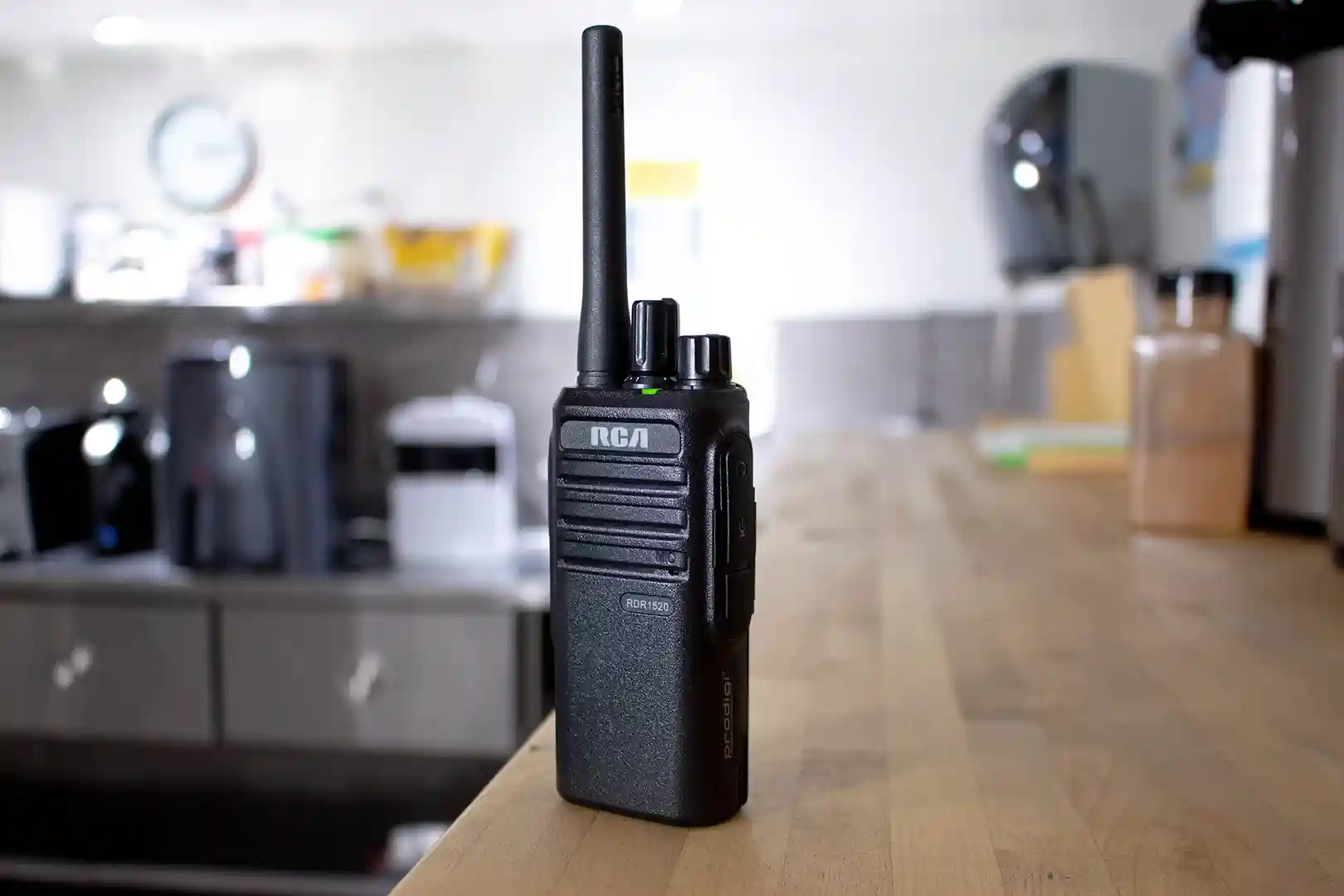
Compact License-Free Retail Radios
FRS and GMRS radios are the workhorses of small retail operations. These retail radios operate without licensing requirements, making them perfect for businesses that want plug-and-play simplicity. They typically offer 22 channels with various privacy codes to reduce interference.
Single-channel simplicity is often all that small stores need. When your entire team needs to stay connected on one frequency, complex multi-channel systems just add confusion. These radios excel at basic push-to-talk communication for price checks, customer assistance, and general coordination.
The key advantages include no licensing fees, no learning curve, and immediate deployment. Staff can start using these radios within minutes of unboxing them. Battery life is typically excellent, with many models providing 12+ hours of operation.
Range is usually adequate for most retail environments. While manufacturers often claim several miles of range, real-world indoor performance is typically 50,000-100,000 square feet depending on obstacles and construction.
High-Power Digital Workhorses for Large Stores
DMR (Digital Mobile Radio) technology represents the professional standard for larger retail operations. These retail radios offer crystal-clear digital audio, extended battery life, and advanced features that analog radios simply can't match.
Channel capacity is a major advantage. Digital radios can store 30-128 channels, allowing complex operations to segregate different departments and functions. Privacy codes numbering over 260 eliminate channel conflicts even in busy shopping centers.
Text messaging capabilities allow silent communication when voice isn't appropriate. Staff can send quick updates about inventory, customer requests, or security concerns without alerting nearby customers.
Emergency button features provide instant access to help in crisis situations. These buttons can be programmed to send location data and emergency alerts to management or security teams.
The audio quality advantage is significant. Digital signals remain clear and sharp even at the edge of coverage areas, while analog signals gradually degrade with distance.
900 MHz Smart Retail Radios
900 MHz frequency-hopping radios offer the best of both worlds: license-free operation with professional-grade performance. These systems use digital technology to hop between frequencies, virtually eliminating interference from other radio users.
License-free operation means no FCC fees or paperwork, but performance rivals licensed radio systems. This makes them ideal for retail chains that want consistent performance across multiple locations without licensing complexity.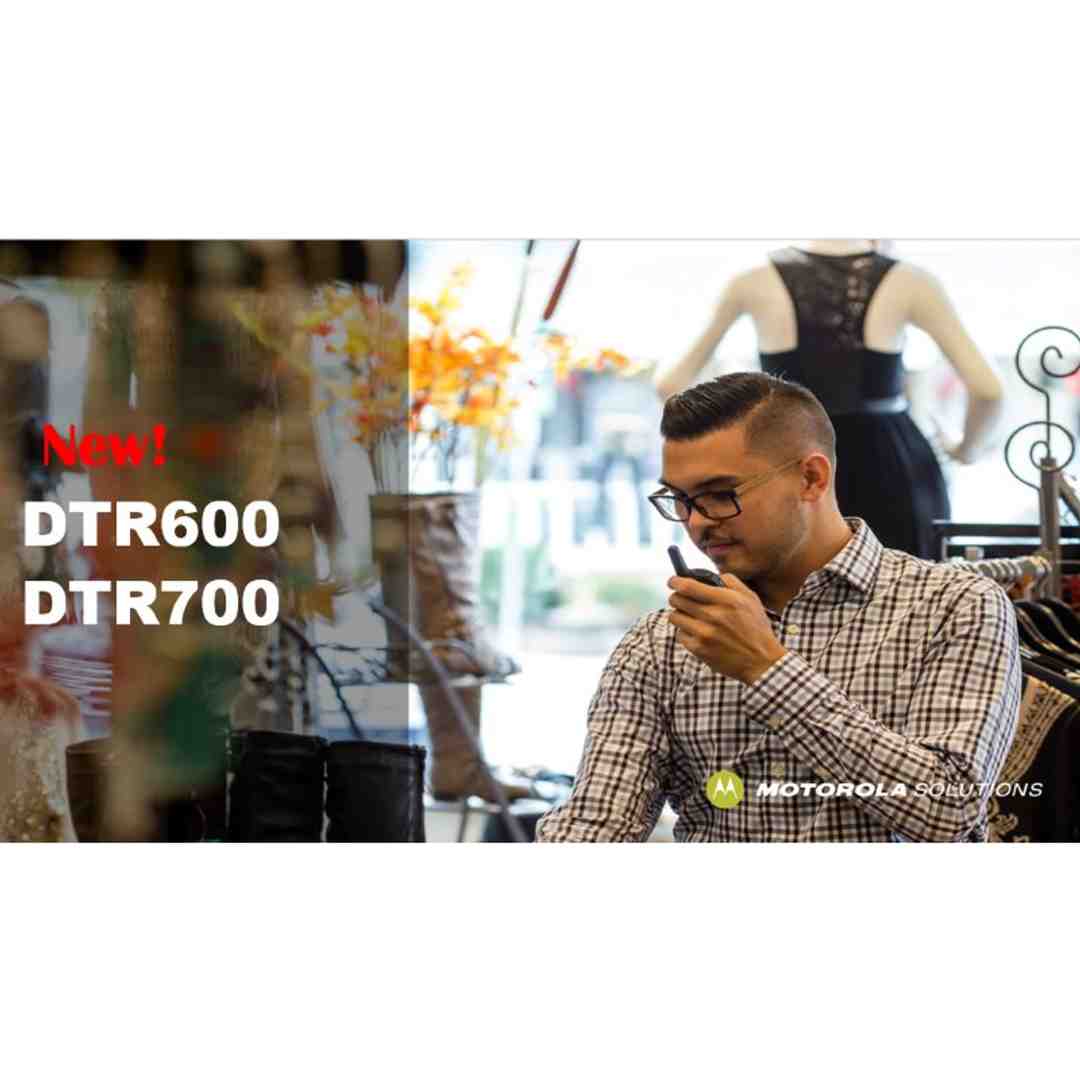
Interference-free communication is the key selling point. Traditional radios can suffer from interference from other businesses, wireless devices, or even LED lighting. Frequency-hopping technology eliminates these problems.
Storewide paging capabilities allow managers to make announcements to all staff simultaneously. This is valuable for shift changes, emergency announcements, or coordinating store-wide activities.
Individual radio addressing means managers can call specific staff members without bothering the entire team. This reduces radio chatter and improves efficiency.
Network & Repeater Solutions
Coverage extension becomes necessary in large stores or complex layouts. Repeater systems receive weak signals and retransmit them at full power, effectively doubling your coverage area.
Metal shelving penetration is a common challenge in retail environments. Tall metal shelving units can create dead zones where handheld radios can't communicate effectively. Repeater systems help overcome these obstacles.
Warehouse integration is crucial for stores with large stockrooms or separate warehouse facilities. Repeater systems can link different areas of your operation, ensuring seamless communication between the sales floor and back-of-house operations.
Cloud control systems represent the future of retail radio communication. These systems allow remote monitoring, programming, and management of your radio fleet from any internet-connected device.
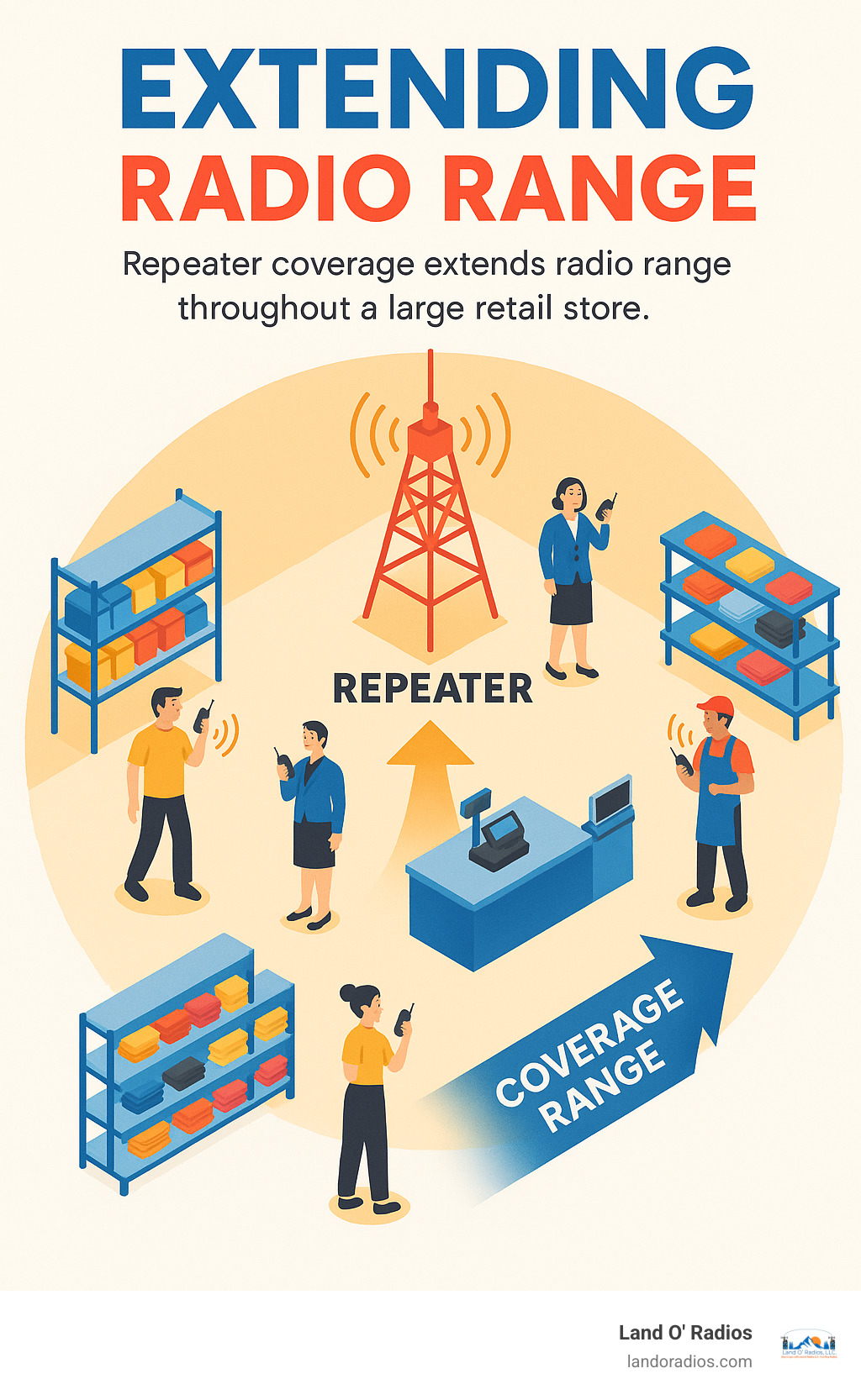
Smart Accessories Bundle Deals
Ear-hugger headsets provide comfortable, secure audio for active retail workers. These stay in place during physical work and provide clear audio even in noisy environments.
Gang chargers are essential for larger operations. Six-unit chargers ensure your entire team starts each shift with fully charged radios. Some models include conditioning features that extend battery life.
Silicone cases protect radios from drops and spills while maintaining access to all controls. They're especially valuable in environments where radios might be exposed to moisture or cleaning chemicals.
Hands-free PTT (Push-to-Talk) rings allow staff to activate radios without using their hands. These are particularly valuable for staff who need to keep their hands free for customer service or merchandise handling.
Frequently Asked Questions about Retail Radios
How many retail radios does my store really need?
The general rule is one radio per associate who needs to communicate during their shift. Retailers often assign a walkie talkie to each associate to maximize coverage and efficiency on the sales floor. For a typical small store, this might mean 4-6 radios. Larger stores might need 20+ radios.
Consider your peak staffing levels, not your minimum crew. You want enough radios so that everyone who needs to communicate can do so without sharing equipment. Don't forget to account for radios being charged, repaired, or temporarily out of service.
Department-specific needs vary. Floor staff, stockroom workers, managers, and security personnel all have different communication requirements. Some stores find it helpful to have department-specific channels or even different radio models for different roles.
What's the difference between unlicensed and licensed radios?
Unlicensed radios operate on FRS (Family Radio Service) or GMRS (General Mobile Radio Service) frequencies that don't require FCC licensing. They're limited in power output but offer plug-and-play simplicity. Most small to medium retail operations can operate effectively with unlicensed radios.
Licensed radios operate on business frequencies that require FCC licensing. The licensing process involves paperwork and fees, but you get access to more channels and can use higher power levels. Licensed radios are typically necessary for large operations or areas with heavy radio traffic.
The power difference is significant. Unlicensed FRS radios are limited to 2 watts, while licensed business radios can operate at 4-5 watts. This power difference translates to better coverage in large stores or challenging environments.
Interference considerations matter in busy retail areas. Licensed frequencies are typically less crowded than unlicensed frequencies, which can mean clearer communication in shopping centers where multiple businesses use radios.
Can retail radios integrate with CCTV or POS systems?
Modern retail radios can integrate with various store systems, though the level of integration depends on the specific equipment and systems involved. Basic integration might include panic buttons that trigger camera recording or alert security personnel.
Advanced systems can integrate radio communication with POS systems to coordinate price checks, manager approvals, and inventory queries. Some systems allow radio users to trigger specific camera views or access inventory databases through voice commands.
Security system integration is becoming more common. Radio panic buttons can trigger lockdown procedures, alert law enforcement, or activate recording systems. Some systems can even provide location data to help security personnel respond to incidents.
The key is choosing radio systems that support integration from the start. Retrofitting integration into existing systems is often more expensive and complex than planning for integration during initial installation.
Conclusion
At Land O' Radios, we've helped hundreds of retailers find the perfect retail radios for their operations. Our curated selection focuses on proven, reliable models that deliver real-world performance in demanding retail environments.
Whether you're running a small boutique in West Miami or managing a large department store, we have the expertise to help you choose the right communication solution. Our team understands the unique challenges of retail operations and can recommend systems that improve customer service, improve security, and boost operational efficiency.
The investment in quality retail radios pays dividends in improved customer satisfaction, reduced shrinkage, and more efficient operations. Don't let poor communication hold your business back - upgrade to professional-grade radio equipment and see the difference it makes.
Ready to explore your options? Our expert team is here to help you design a communication system that grows with your business. From simple two-radio setups to complex multi-site networks, we have the products and expertise to keep your team connected.
For more insights on choosing the right communication equipment for your business, check out our comprehensive guide to commercial radios for every need.
